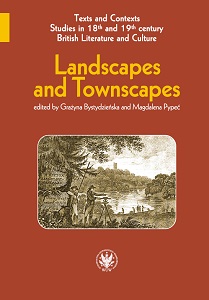City as a Nightmare: The Treatment of Urban Space in "The Strange Case of Dr Jekyll and Mr Hyde" and Its Selected Visual Interpretations
City as a Nightmare: The Treatment of Urban Space in "The Strange Case of Dr Jekyll and Mr Hyde" and Its Selected Visual Interpretations
Author(s): Anna Krawczyk-Łaskarzewska
Subject(s): Theoretical Linguistics, Applied Linguistics, Studies of Literature, 19th Century, Philology, British Literature
Published by: Wydawnictwa Uniwersytetu Warszawskiego
Keywords: The Strange Case of Dr Jekyll and Mr Hyde; Robert Louis Stevenson; city; urban space; book illustration; graphic novel; adaptation
Summary/Abstract: The Strange Case of Dr Jekyll and Mr Hyde, the 1886 novella by Robert Louis Stevenson, has inspired numerous interpretations and adaptations in visual and audio-visual media. While its popularity and cultural resonance should be ascribed first and foremost to the captivating portrayal of doctor Henry Jekyll and his evil alter ego, the setting of the controversial story merits attention as well, especially because it happens to be “integral to the situations played out within it” (Ridenhour 12). Presented as “a labyrinth of uncertain topography and confusing repetitions” (Dury 63), constantly transformed and distorted due to the intricate narratorial pattern, Stevenson’s London in Jekyll and Hyde remains an enigmatic, underwritten space and, therefore, a considerable challenge in terms of visual reimagining. From the point of view of the present article, of particular interest will be the work done by several artists who either provided illustrations for the novella or condensed its content into graphic novels. The common denominator for the examples selected is the representation of the city as a nightmare. Furthermore, as rendered by artists such as Charles Raymond Macauley, S. G. Hulme Beaman, Nestor Redondo, Thomas Van Der Linde, and Angela Barrett, the visualized “urbanscapes” function also as an extension of the narrators’ inner turmoil and a marker of the symbiotic, if toxic, relationship between the fictional characters and their (artificial) environment.
Book: Landscapes and Townscapes
- Page Range: 101-123
- Page Count: 23
- Publication Year: 2021
- Language: English
- Content File-PDF

